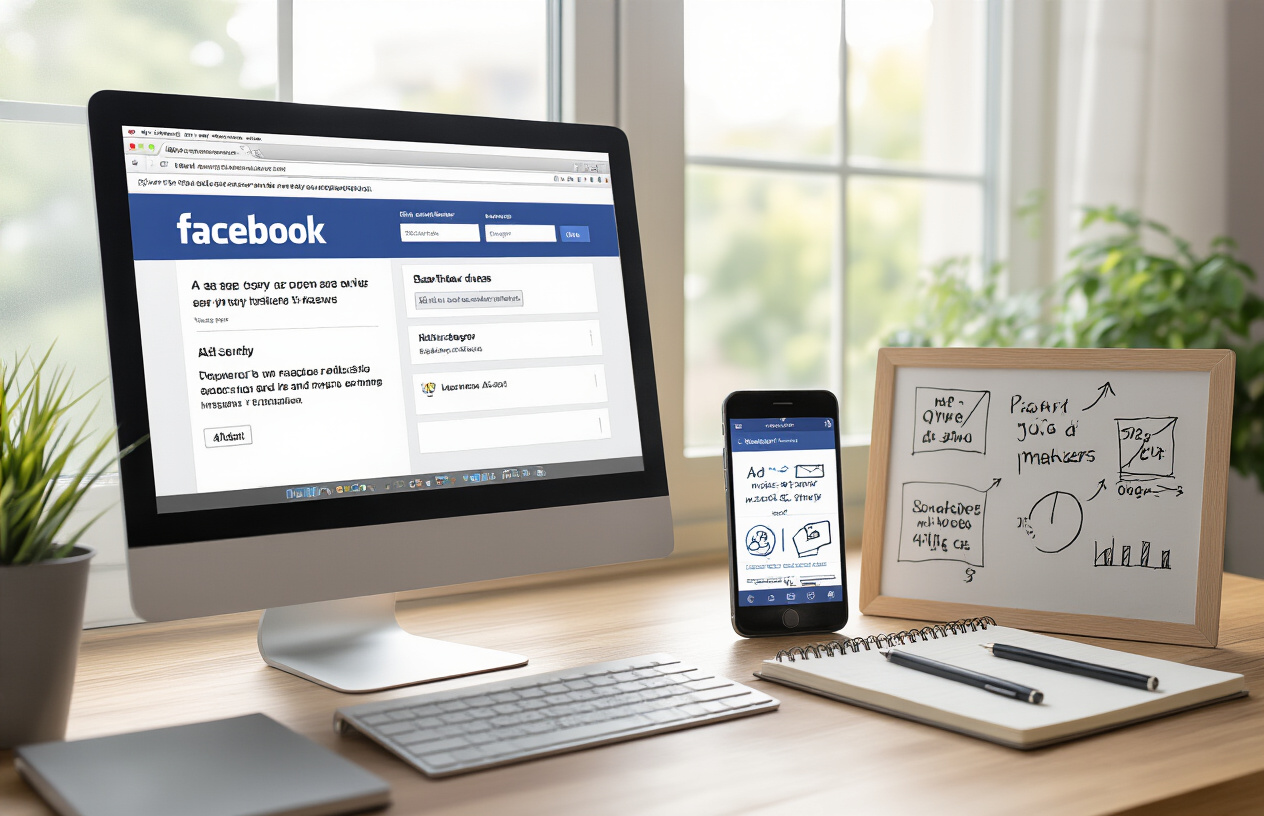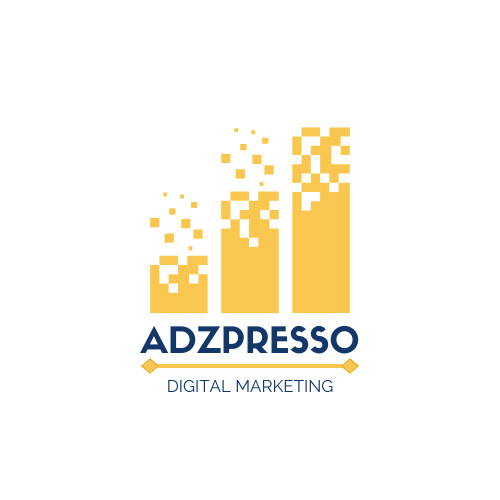A Beginner’s Guide to Running Facebook & Instagram Ads That Convert
New to social media advertising? This guide helps small business owners and marketing beginners create Facebook and Instagram ads that actually drive sales. You’ll learn how to set up your ad accounts correctly, define your ideal customer, and craft ads that make people click. We’ll cover essential targeting strategies and show you simple testing methods to improve your results over time.
Understanding the Facebook & Instagram Ad Landscape

Key differences between Facebook and Instagram platforms
Instagram is visually-driven while Facebook offers more text flexibility. On Instagram, your image or video makes or breaks your ad. Period. Users scroll quickly, and only thumb-stopping visuals survive.
Facebook gives you breathing room with longer captions and multiple formats. You can tell stories, explain benefits, and build more complex arguments.
The audiences differ too. Instagram skews younger (18-34 dominates) and more fashion/lifestyle-oriented. Facebook reaches practically everyone – including that uncle who still shares minion memes.
| Platform | Primary Format | Audience | Ad Placement |
|---|---|---|---|
| Visual-first | Younger, trend-focused | Stories, Feed, Explore, Reels | |
| Mixed media | Broader demographic | Feed, Marketplace, Groups, Right column |
Why these platforms are essential for modern marketing
You simply can’t ignore the numbers. Facebook has nearly 3 billion monthly users. Instagram? Over a billion. That’s not just big – it’s where your customers live online.
The targeting capabilities are almost scary-good. Want to reach 32-year-old pet owners who recently bought gardening supplies and like indie rock? Done.
These platforms offer the perfect blend of reach and precision. You can start with $5 a day and scale to thousands when you find what works.
And unlike traditional advertising, you get immediate feedback. Within hours, you know if your message connects or falls flat.
Latest ad formats and features you should know
Reels ads are the new darling. Short, vertical videos that feel native in the feed get significantly higher engagement than static images. They don’t need to be polished – authentic often wins.
Shopping tags let users buy directly from your posts. The path from “that’s cute” to purchase is now seconds, not days.
Stories ads appear between users’ stories and disappear after 24 hours, creating urgency. The full-screen, immersive format drives attention when done right.
Carousel ads let you showcase multiple products or tell a sequential story. Each swipe builds interest and overcomes objections.
Automated placements now use AI to put your ads where they’ll perform best – without you having to guess.
Setting realistic expectations for beginners
Your first ads probably won’t be home runs. Even experts test constantly. Expect to spend $300-500 in “learning money” before finding profitable approaches.
Conversion takes time. The buyer journey rarely goes: see ad → buy immediately. Plan for nurturing sequences.
Focus on metrics that matter. Likes are nice, but leads, sales, and return on ad spend (ROAS) pay bills.
Start with retargeting – showing ads to people who’ve already visited your site converts 3-5x better than cold traffic.
Plan for mobile first. Over 80% of Facebook and Instagram browsing happens on phones, so your landing pages better look perfect on small screens.
Setting Up Your Ad Accounts Properly

A. Creating a Business Manager account
Facebook Business Manager isn’t optional anymore if you’re serious about ads. It’s the command center for all your advertising efforts.
Setting up is straightforward:
- Go to business.facebook.com
- Click “Create Account”
- Enter your business name and email
- Follow the prompts to verify your identity
The beauty of Business Manager? It separates your personal and professional Facebook lives completely. No more awkward moments where you accidentally post business content to your personal profile (we’ve all been there).
B. Installing the Facebook pixel for tracking
The Facebook pixel is your secret weapon. Without it, you’re basically throwing money into a black hole and hoping for the best.
To install it:
- Head to Events Manager in Business Manager
- Click “Connect Data Sources” and select “Web”
- Choose “Facebook Pixel” and click “Connect”
- Name your pixel (usually your business name)
- Add the code to your website header
Not tech-savvy? No problem. Most website platforms have simple integrations. Shopify, WordPress, and Wix all offer one-click pixel installations.
C. Setting up custom conversions
Custom conversions tell Facebook what actually matters to your business.
Think about it – a page view isn’t the same as a purchase. Setting up custom conversions helps Facebook find people who’ll take meaningful actions.
To create them:
- Go to Events Manager
- Click “Custom Conversions”
- Click “Create Custom Conversion”
- Define your conversion event (purchase, lead, etc.)
- Set parameters (like purchase value or specific URLs)
Pro tip: Create conversions for each stage of your funnel – from awareness to purchase. This gives you a clearer picture of where people drop off.
D. Organizing your account structure for success
Your account structure makes or breaks your campaigns. A messy account means wasted money.
The winning structure looks like this:
- Campaign: Focused on ONE objective (conversions, traffic, etc.)
- Ad Sets: Targeted at specific audiences
- Ads: 2-3 variations to test what works
Resist the urge to lump everything together. Separate campaigns for separate goals. Separate ad sets for separate audiences.
E. Privacy considerations and compliance essentials
Privacy isn’t just good practice – it’s the law. And Facebook’s watching.
Must-do compliance steps:
- Create a clear privacy policy (mention Facebook pixel specifically)
- Add visible cookie notices on your website
- Include opt-out options for data collection
- Update your terms of service to reflect data usage
If you collect personal information, you need explicit consent. No exceptions.
With iOS 14+ updates, you’re also limited to 8 conversion events per domain. Prioritize the events that matter most to your business goals.
Defining Your Target Audience for Maximum Conversions

Using demographic targeting effectively
Ever tried throwing a party without knowing who’s coming? That’s what running ads without demographic targeting feels like.
Facebook and Instagram let you zero in on age, gender, location, language, and more. But here’s the trick – don’t just pick random demographics. Dig into your existing customer data first.
Is your product killing it with 25-34 year old women in urban areas? Start there. Are suburban dads your bread and butter? Target them specifically.
The power move? Combine demographics. A 35-year-old parent in Chicago who just bought a home is a completely different prospect than a 35-year-old renter in Miami with no kids.
Leveraging interest-based audiences
Your potential customers are out there right now, telling Facebook and Instagram exactly what they care about. Pretty convenient, right?
Interest targeting lets you reach people based on their digital behavior – pages they follow, posts they engage with, and apps they use.
Don’t just target broad interests like “fitness” when you can drill down to “HIIT workouts” or “marathon training.” The more specific, the better your conversion rates.
Pro tip: Test combinations of interests. Someone who likes both “home cooking” AND “meal planning” is probably a better fit for your meal prep service than someone who just likes food in general.
Creating custom audiences from your existing customers
Your existing customers are marketing gold. They’ve already proven they’ll buy from you.
Upload your customer email list and Facebook will match those people to their profiles. But don’t stop there. You can create custom audiences from:
- Website visitors (using the Facebook pixel)
- People who watched your videos
- Instagram profile engagers
- App users
The real magic happens when you segment these audiences. Create separate groups for:
- High-value customers
- Recent purchasers
- Cart abandoners
- Blog readers who haven’t purchased
Each group needs different messaging to convert.
Developing lookalike audiences to scale your reach
Found a customer segment that’s converting like crazy? Lookalike audiences are your secret weapon for scaling up.
Here’s how they work: You give Facebook a “source audience” (like your best customers), and the algorithm finds people with similar characteristics and behaviors.
You can adjust the lookalike size from 1% (most similar) to 10% (broader reach). Start with 1-2% for best results.
The smart approach? Create multiple lookalikes from different seed audiences:
- Lookalike of high-value customers
- Lookalike of newsletter subscribers
- Lookalike of website visitors who spent 3+ minutes on site
Test these against each other and watch your conversion rates climb while your cost per acquisition drops.
Crafting High-Converting Ad Creative

Elements of attention-grabbing visuals
Your ad has about 1.7 seconds to grab someone’s attention while they’re mindlessly scrolling. That’s it.
What makes people stop? Strong visuals that break the pattern of everything else in their feed.
The most effective Facebook and Instagram ad visuals:
- Show your product in action (not just sitting there looking pretty)
- Feature real people with authentic expressions (ditch those cheesy stock photos)
- Use contrasting colors that pop against the blue/white Facebook interface
- Include text overlays that highlight your main value proposition
- Maintain high resolution (blurry images scream “amateur”)
Pro tip: Test bright colors against neutral backgrounds. Our tests show these consistently outperform busy, cluttered designs by 37%.
Writing compelling ad copy that sells
Nobody cares about your features. Harsh, but true.
People care about what those features mean for THEM. Your ad copy needs to bridge that gap.
The formula that works:
- Address a specific pain point in the first line
- Present your solution (briefly)
- Back it up with proof (numbers, testimonials, results)
- Make it scannable with short sentences and paragraphs
Example:
❌ “Our productivity app has 25+ features and syncs across devices.”
✅ “Forget deadlines again? Our app users complete 38% more tasks in their first week.”
The second version speaks directly to the pain and provides evidence of the solution’s effectiveness.
Designing effective calls-to-action
Your CTA isn’t just a button. It’s the moment of truth.
Vague CTAs like “Learn More” are conversion killers. They don’t create urgency or excitement.
Instead, use CTAs that:
- Clearly state what happens next (“Start Your Free Trial”)
- Create FOMO (“Get Access Before Prices Increase”)
- Feel low-risk (“See Results In 5 Minutes”)
- Match your funnel stage (awareness = “See How It Works”, decision = “Buy Now”)
The best CTAs complete this sentence: “I want to ___________”
Test different CTAs against each other. Small wording changes can boost click-through rates by 15-20%.
Mobile-first design principles
Over 94% of Facebook users access it via mobile. Design accordingly.
Mobile-first design isn’t optional anymore. It’s essential.
Key principles to follow:
- Keep important elements centered (thumbs can’t reach corners easily)
- Use text that’s readable without squinting (minimum 14pt font)
- Create vertical videos and images (they take up more screen space)
- Minimize text (mobile users scan even faster than desktop users)
- Ensure buttons are “thumb-friendly” (at least 44×44 pixels)
Remember: if your ad looks cluttered on YOUR phone, imagine how it looks to someone casually scrolling while waiting for coffee.
Video ad best practices
Video ads consistently outperform static images, but only when done right.
The first 3 seconds determine whether someone keeps watching or scrolls past. Make them count.
Video ad musts:
- Start with movement or intrigue (no logos or slow intros)
- Design for sound-off viewing (85% of Facebook videos are watched without sound)
- Keep it under 15 seconds for feed placements
- Show your product in action within the first 5 seconds
- End with a clear, compelling CTA
The biggest video ad mistake? Creating TV commercials for social media. They’re completely different formats with different viewer behaviors.
A simple product demo with text overlays often outperforms expensive, produced content. Focus on clarity over production value.
Building Campaigns That Drive Results

Choosing the right campaign objectives
You know what kills most Facebook and Instagram ads before they even have a chance? Picking the wrong objective.
Think about it. If you want more website visitors but choose the “engagement” objective, Facebook’s going to show your ad to people who love clicking Like buttons—not people who love clicking through to websites.
Your objective tells Facebook exactly what you want people to do. Here are the smart picks for beginners:
- Awareness: When nobody knows your brand exists yet
- Traffic: When you need more eyeballs on your website
- Lead generation: When you’re hunting for email addresses
- Conversions: When you want actual customers (but your pixel needs data first!)
Don’t overthink this. Match your objective to where your customers are in their journey.
Setting up effective ad sets
Ad sets are where the magic happens. This is where you tell Facebook exactly WHO should see your ads.
The biggest rookie mistake? Going too broad. You might think “everyone should buy my product!” but your budget says otherwise.
Start with these targeting essentials:
- Age range within 10-15 years
- Locations where you actually sell
- 3-5 specific interests that match your ideal customer
And please, use the Audience Size indicator. Too small? Your costs skyrocket. Too large? Your relevance tanks.
Budget allocation strategies for beginners
The cold truth about ad budgets? You’ll probably waste some money figuring things out.
But here’s how to waste less:
Start with $10-20 daily if you’re new. This gives you enough data without emptying your wallet.
Try this simple split:
- 70% on your best-performing audience
- 20% testing new audiences
- 10% experimenting with creative
Don’t judge performance too quickly. Give campaigns at least 3-4 days before making decisions. The algorithm needs time to find your people.
Scheduling ads for optimal performance
Timing matters more than most beginners realize.
Your audience isn’t on social media 24/7, and showing ads when they’re asleep is just burning money.
Two smart approaches:
-
Lifetime budget scheduling: Set specific hours when your audience is most active. For most B2C, that’s evenings and weekends.
-
Automated scheduling: Let Facebook figure it out, but only after you have data.
Check your Facebook Page Insights to see when your followers are online. That’s your starting point for scheduling.
And remember this golden rule: don’t constantly pause and restart campaigns. The algorithm hates that. Set it, give it time, then make calculated adjustments.
Testing and Optimization Techniques

A/B Testing Fundamentals for Ads
Ever run an ad and wonder, “What if I changed the image?” That’s exactly what A/B testing answers.
A/B testing is simply comparing two versions of your ad to see which performs better. Think of it as a face-off between two contenders for your marketing dollars.
Here’s how to nail it:
- Test one element at a time (headline, image, CTA)
- Create meaningful differences (not just slight color changes)
- Run tests simultaneously (same audience segment, same time period)
- Gather enough data before concluding (at least 3-5 days)
The beauty of Facebook and Instagram’s platform? You can set up these tests right in Ads Manager without breaking a sweat.
Key Metrics to Monitor for Performance
Watching the wrong metrics is like checking your car’s radio when the engine’s smoking.
Focus on these conversion-centered metrics:
- Click-through rate (CTR): Are people interested enough to click?
- Cost per click (CPC): How much are those clicks costing you?
- Conversion rate: The golden number – how many clickers become customers
- Return on ad spend (ROAS): For every dollar spent, how many do you get back?
Don’t get hypnotized by vanity metrics like reactions or shares. They’re nice, but they don’t pay bills.
When and How to Scale Successful Campaigns
Found a winner? Time to pour gas on that fire – strategically.
Scale up when:
- Your ROAS is consistently above your target (typically 3x+)
- You’ve gathered at least a week’s worth of solid data
- Your frequency is below 3 (people aren’t seeing your ad too often)
How to scale without tanking performance:
- Increase budget gradually (10-20% increments every 3-4 days)
- Duplicate winning ad sets with higher budgets
- Expand to similar audiences
- Try new placements with the same creative
Remember: Facebook’s algorithm needs time to adjust after changes. Give it at least 24 hours before making judgments.
Troubleshooting Underperforming Ads
Got ads that perform worse than a chocolate teapot? Time for triage.
Common issues and fixes:
High CPCs but low CTR
Your creative isn’t compelling enough. Test new images or copy that addresses pain points more directly.
Good CTR but no conversions
Your landing page isn’t delivering on the ad’s promise. Check for disconnect between ad and landing page experience.
High frequency but declining performance
Ad fatigue! Refresh your creative or target new audiences.
Spending budget but no impressions
Your audience might be too narrow, or you’re getting outbid. Expand targeting or increase bid cap.
The secret weapon? Facebook’s Inspect tool in Ads Manager. It shows exactly where your ad is losing steam in the conversion process.
Advanced Strategies to Boost Conversion Rates

A. Retargeting campaigns that convert abandoned prospects
You’ve been there. Someone visits your site, browses your products, maybe even adds something to their cart—then poof—they’re gone. That’s where retargeting comes in.
The magic of retargeting is reminding people what they’re missing. Create custom audiences from website visitors who didn’t complete a purchase. Then show them what they left behind.
But don’t just show the same ad. Try these instead:
- Testimonial ads featuring real customers
- Limited-time discount offers
- Free shipping promotions
- Bundle deals related to their viewed items
The sweet spot? A sequence that starts 24 hours after they leave, with 3-5 touchpoints over two weeks. Anything more feels like stalking.
B. Creating effective sales funnels
Sales funnels aren’t just fancy marketing talk—they work. The basic structure goes:
- Awareness (broad targeting)
- Consideration (lead magnets)
- Decision (offers and social proof)
- Action (conversion-focused ads)
Your top-of-funnel content should be entertaining and educational. Think how-to videos or quick tips that solve common problems. Mid-funnel is where you offer value—free guides, webinars, or samples in exchange for contact info.
Bottom-funnel ads need urgency and clear CTAs. “Last chance” and “Only 5 left” still work because they tap into FOMO. Combine these with customer reviews and you’ve got a winning combo.
C. Implementing automated rules
Automated rules are your 24/7 campaign manager. They adjust your campaigns while you sleep (or binge Netflix).
Set up rules to:
- Pause underperforming ads (anything with CPC over $X)
- Increase budget for high-performing ad sets (over 3X ROAS)
- Schedule dayparting to run ads only during peak conversion hours
- Automatically adjust bids based on performance metrics
The trick is starting simple. One rule at a time, measure results, then add more.
D. Seasonal and time-sensitive campaign strategies
Timing is everything in advertising. Black Friday might be obvious, but what about National Donut Day? Industry conferences? Local events?
Create a marketing calendar with three types of opportunities:
- Major holidays (plan 2-3 months ahead)
- Industry-specific events (1 month prep)
- Trending topics (ready-to-go templates for quick deployment)
Pre-build campaign templates you can launch quickly when trends hit. Have creative ready to go with placeholders you can update fast.
And don’t forget about weather triggers. Selling umbrellas? Target areas expecting rain. Sunscreen? Hit those heatwave locations.
E. Cross-platform campaign coordination
Running ads on both Facebook and Instagram isn’t about copying and pasting. Each platform has its own vibe.
Instagram is visual first—perfect for product showcases and lifestyle content. Facebook gives you more text space for detailed explanations and longer videos.
The smartest advertisers use sequential storytelling across platforms:
- Start on Instagram with eye-catching visuals to build awareness
- Continue on Facebook with deeper dive content
- Retarget across both platforms with conversion-focused messaging
Use consistent creative elements (colors, fonts, faces) so your audience immediately recognizes your brand regardless of platform.
And always, always track cross-platform attribution. The journey often starts on one platform and ends on another.

Mastering Facebook and Instagram advertising takes time, but following the fundamental strategies outlined in this guide will set you on the path to creating campaigns that truly convert. From properly setting up your accounts and clearly defining your target audience to crafting compelling creative and implementing strategic testing protocols, each step builds toward more effective advertising outcomes.
Remember that social media advertising is both an art and a science. Start with these beginner principles, continuously analyze your results, and gradually implement the advanced optimization techniques as you gain confidence. Your commitment to testing, learning, and refining your approach will ultimately determine your success in creating Facebook and Instagram ads that not only reach your audience but convince them to take action.
